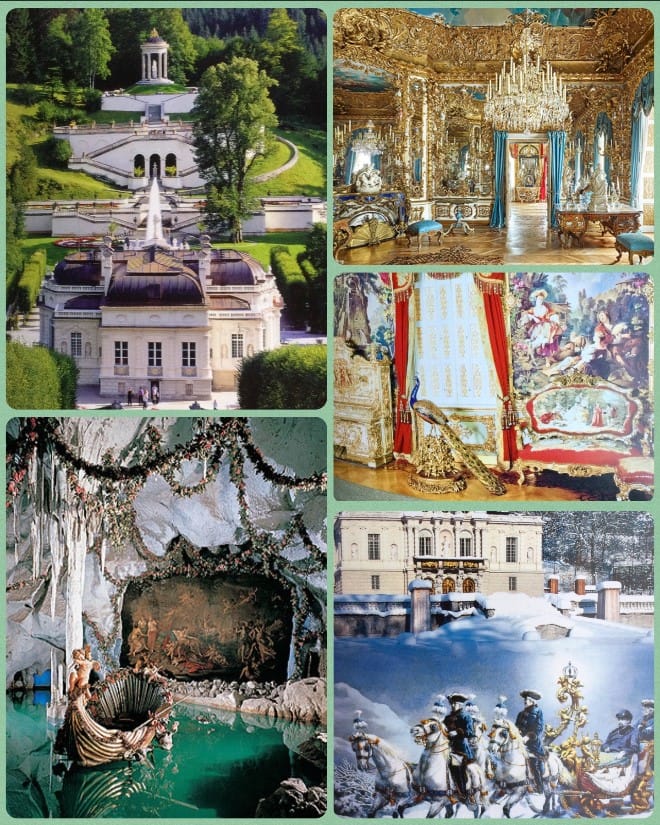Europe - Ludwig’s Fairyland

We spent a few hours driving into Austria and through the magnificent Austrian Alps - stunning snow-capped mountains, towns and villages nestled in the emerald green valleys. Photos cannot capture their sheer beauty, as we headed to Linderhof, one of Ludwig II’s fairytale castles.

Linderhof is one of the 3 castles built for King Ludwig II of Bavaria (1845-1886). He ascended the throne at the age of 18, after his father died unexpectedly. His reign was a lonely one, the kingdom was managed well by his underlings so he spent his time living a decadent lifestyle and indulging in his passionate building projects.
Linderhof was the only castle completed in his lifetime - a small but ornately decorated hunting lodge. His other castles are Herrenchiemsee and Neuschwanstein - the castle Walt Disney used to model his Fantasyland.
To my mind Herrenchiemsee looks a lot more like Disney's castle! I checked my sources to double check the facts.



Neuschwanstein Credit: Wesley Gibbs / Unsplash; Walt Disney's Castle Credit: disneyland.disney.go.com; Herrenchiemsee Credit: Jorge Martínez, instagram @jormtz9 / Unsplash

We toured the rooms, each more opulent than the previous one - gold, silver, brocade walls, Sevres and Meissen porcelain. A blue room, pink room, mauve room. Ludwig loved peacocks - a few beautifully sculpted examples as we tried to absorb the grandeur.
The Mirror Room reminded me of Versailles, though at Linderhof it’s a tiny room, gold rimmed and scrolled mirrors on every wall. Did Yayoi Kusama invent Infinity Rooms, which I mentioned when travelling in South Korea? No, here at Linderhof, in the 19th century Ludwig could see into infinity through his mirrors.
Being a night person, Ludwig probably used this room mainly in the evening. The effect must have been all the more dazzling with countless candles glittering in the Viennese crystal chandelier and even an ivory chandelier - sadly 40 elephant tusks were used taking artisans 4 years to create.
Chimneys lined with lapis lazuli, the furniture, ornamented with rosewood veneer and bronze figures, an ostrich-down carpet in front of the alcove, fine Carrara marble sculptures. No expensive was spared here or in any of the other rooms.
Ludwig loved midnight sleigh rides in his golden sled, horsemen and servants dressed in rococo style white and blue uniforms with 3 cornered hats and wigs. What a sight that would have been!

There’s a manmade grotto, entered by a secret door, a wonderland of ever changing coloured underwater lights and a heated pool - operated by one of the first generators - this was in the late 19th century! Unfortunately it was closed for restoration. An ornate gondola floats on the water in which Ludwig could enter the illusion of a royal dreamworld - he was a lifelong admirer of Richard Wagner, reliving the fantastic scenery conjured by his opera Tannhäuser.
It’s no wonder, Ludwig was known as the Fairytale King.
We continued through a fairyland ourselves, climbing higher into alpine regions, more emerald green valleys and postcard perfect towns to arrive at Innsbruck in the late afternoon - a post coming to you tomorrow.
